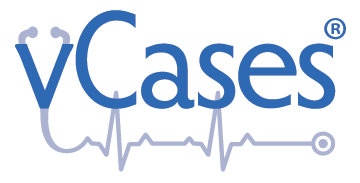Relevant LCME Standards Addressed by vCases
6.3 Self-Directed and Life-Long Learning
The faculty of a medical school ensure that the medical curriculum includes self-directed learning experiences and time for independent study to allow medical students to develop the skills of lifelong learning. Self-directed learning involves medical students’ self-assessment of learning needs; independent identification, analysis, and synthesis of relevant information; and appraisal of the credibility of information sources.
7.2 Organ Systems/Life Cycle/Primary Care/Prevention/Wellness/Symptoms/Signs/ Differential Diagnosis, Treatment Planning, Impact of Behavioral and Social Factors
The faculty of a medical school ensure that the medical curriculum includes content and clinical experiences related to each organ system; each phase of the human life cycle; continuity of care; and preventive, acute, chronic, rehabilitative, end-of-life, and primary care in order to prepare students to:
Recognize wellness, determinants of health, and opportunities for health promotion and disease prevention
Recognize and interpret symptoms and signs of disease
Develop differential diagnoses and treatment plans
Recognize the potential health-related impact on patients of behavioral and socioeconomic factors. Assist patients in addressing health-related issues involving all organ systems
7.4 Critical Judgment/Problem-Solving Skills
The faculty of a medical school ensure that the medical curriculum incorporates the fundamental principles of medicine, provides opportunities for medical students to acquire skills of critical judgment based on evidence and experience, and develops medical students’ ability to use those principles and skills effectively in solving problems of health and disease.
8.6 Monitoring of Completion of Required Clinical Experiences
A medical school has in place a system with central oversight that monitors and ensures completion by all medical students of required clinical experiences in the medical education program and remedies any identified gaps.
8.7 Comparability of Education/Assessment
A medical school ensures that the medical curriculum includes comparable educational experiences and equivalent methods of assessment across all locations within a given course and clerkship to ensure that all medical students achieve the same medical education program objectives.
8.8 Monitoring Student Time
The medical school faculty committee responsible for the medical curriculum and the program’s administration and leadership ensure the development and implementation of effective policies and procedures regarding the amount of time medical students spend in required activities, including the total number of hours medical students are required to spend in clinical and educational activities during clerkships.
